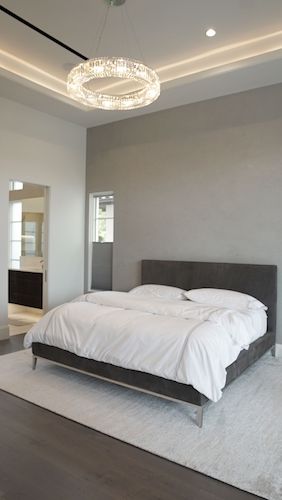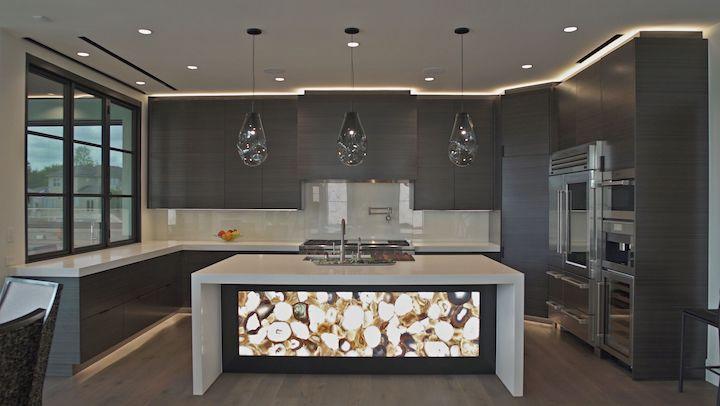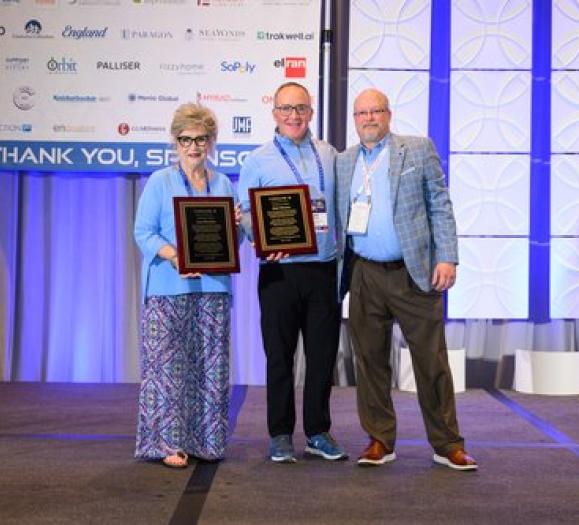Lighting, often called the jewelry of the home, can transform the aesthetics of a space, but it also has a major impact on health and wellness. Research has shown color temperature can affect sleep patterns, mood and eyesight. But this research is constantly evolving, and new technologies on the market can help promote optimal eye health. It’s up to the lighting professionals to stay on top of the latest developments to properly educate consumers in their showrooms and in client spaces.
In the Showroom
Benjamin Parra is General Manager of Lights Fantastic Pro, a 19,000-square-foot lighting showroom and “experience center,” according to Parra.
“We talk a lot about rethinking lighting and what lighting can do for you now that there’s really no limitation on how we can light a space,” he says.
While customers do see wellness as a priority, Parra says his team of lighting designers provides many of the health-based recommendations.
“The example I give most often is our iPhones,” he says. “They came out with an update so that at night there’s now a night mode where your phone gets warm, the color temperature on your phone is warm. As we’ve gone away from books and are now looking at digital devices in our bed, that shift allows our brain to kind of slow down a little bit so we’re not just getting blasted in the face with this very cool light. So that’s the example I give when I’m trying to talk to our customers about the importance of color temperature and how important it is to have the right color for your space.”
The experiential nature of Parra’s showroom allows customers to see the impact of color temperature in different spaces. It helps contextualize the way the lighting temperature affects their eyesight.
“In our store we show a really great example of a closet in the home and we light it with four different color temperatures,” he says. “It shows 2,700 Kelvin, which is incandescent; 3,000 Kelvin; 3,500 Kelvin and 4,000 Kelvin. And within that closet you can see what a black and blue shoe looks like at 2,700 Kelvin. You almost can’t tell the difference in the color. When you look at the 4,100 Kelvin, you can see that it’s distinctly a black and blue shoe.” While that light might be too cool to live under, he explains, it’s great to help people see what they’re looking at in their closets.
For optimal wellness, it’s often less about the type of bulb and more about where they’re located. In a home office, for example, Parra says overhead lighting is a mistake, since it creates the most glare on a computer screen, which can cause eye strain.
“As a good rule, if you’re using a computer or some type of electrical device, the ambient lighting in the room should be half as bright as what is typically found in a standard room without that device on,” he says. “We try and create these lower levels of light in an office, whether it’s a table lamp that’s tucked away on the desk, or perhaps some indirect lighting underneath the shelves to create a glow, or low-profile recessed lighting.”
In the Classroom
The research on lighting in health is constantly evolving. When we spoke with Terry McGowan, the American Lighting Assn.’s Director of Engineering, he was fresh from a meeting of the International Commission on Illumination, a joint meeting of the U.S. and Canadian committees. This year, the Council For Optical Radiation Measurements joined the groups.

in a bedroom, where cooler temperatures can impact sleep patterns.
“These are the folks that measure lighting quantities. I use the word ‘lighting’ kind of loosely because it’s broader than that,” McGowan says. “It’s infrared, it’s ultraviolet, it’s stuff you can’t see, as well as light. And they worry a lot about what should be measured. How do we use it? What are the units? What are the chances for error? Is there instrumentation available? It’s very nerdy, but it’s fascinating. … It’s just wonderful to see these folks who think about these things all the time, get in the room together and what they talk about, the things that really worry them and the things that they consider.”
McGowan said many of the new developments in light and health have to do with the human eye. For decades, scientists and lighting designers alike have been aware of how lighting affects the rods and cones in an eye, but a major development led to the discovery of sensors in the eye that previously were undetected.
“These other cells that are sensitive to light, that don’t connect with the visual system, they connect with the brain and other parts of the body,” he says. “They didn’t even know they existed, and now we do. And so since then, a lot of research has been going on about what these cells do and how to make them do what they do, and what we should be doing from a lighting standpoint to make sure that we’re treating the body properly.”
Now, this research is translating to new technology, but McGowan says there are still questions of variables beyond the bulb that can impact health. Color is just one part of the equation. Intensity, length of exposure and time of day of exposure are other factors that should be taken into consideration.
“Manufacturers are scratching their heads and saying, ‘Now, wait a minute. We can’t control all of that stuff,’” he says. “And that’s really where the rub is because the manufacturers can certainly control the color. They can control the spectrum of the light. They can control, to some extent, the intensity of the light. But unless that light gets into your eyes, it isn’t going to do the job that it is intended to do. So here comes the lighting designers saying, ‘OK, now what do you do all day? Do you work in a kitchen? Do you sit at a desk? Do you wander around the house? Are you outside? Are you inside? I’ve got to build a lighting profile for you that is as healthy as we know how to get it.’”
For the future of light in health, McGowan sees the idea of “putting numbers on it” taking hold. That is, quantifying the amount of light in a given space and qualifying its health benefits.
“We’d like to have a lighting designer with a light meter in hand go through a house and say, ‘There’s enough light here. You will be getting some health benefits from this light if you sit in this room in the morning.’ Or, ‘Your bedroom is really bright at night and you’d have to leave that light on out in the hallway. Why don’t you put an occupancy sensor on it so it shuts off?’ So there will be things a lighting designer thinks about that could be done easily to make a house and its lighting more healthy to the people that use it.”
Designers should be on the lookout for new educational materials, guidelines and fixtures in the near future, he says.
For self-proclaimed “lighting geeks” like Parra, it’s important to stay on the cutting edge of the latest research and communicate with vendors to learn about the latest technologies.
“I stay up and read about this stuff,” Parra says. “I also am very proactive about calling on our different reps, whether they’re commercial or residential, and finding out what’s new. What have these guys brought out recently? What line have I not heard of that you are now carrying that might have something unique to what we’re doing in the business?”
That knowledge then has to be passed down to the staff.
“It’s a combination where we have our outside vendors and reps come in and teach us,” he says. “And then also part of it is incumbent upon me, when I find the technology, if I’m at a trade show or if I get an individual sales call to go in front of my staff and train them. We have weekly staff meetings to review the new product and to really talk about the technology. The technology changes so fast in its form and in its function that education is absolutely key to what we’re doing.”







